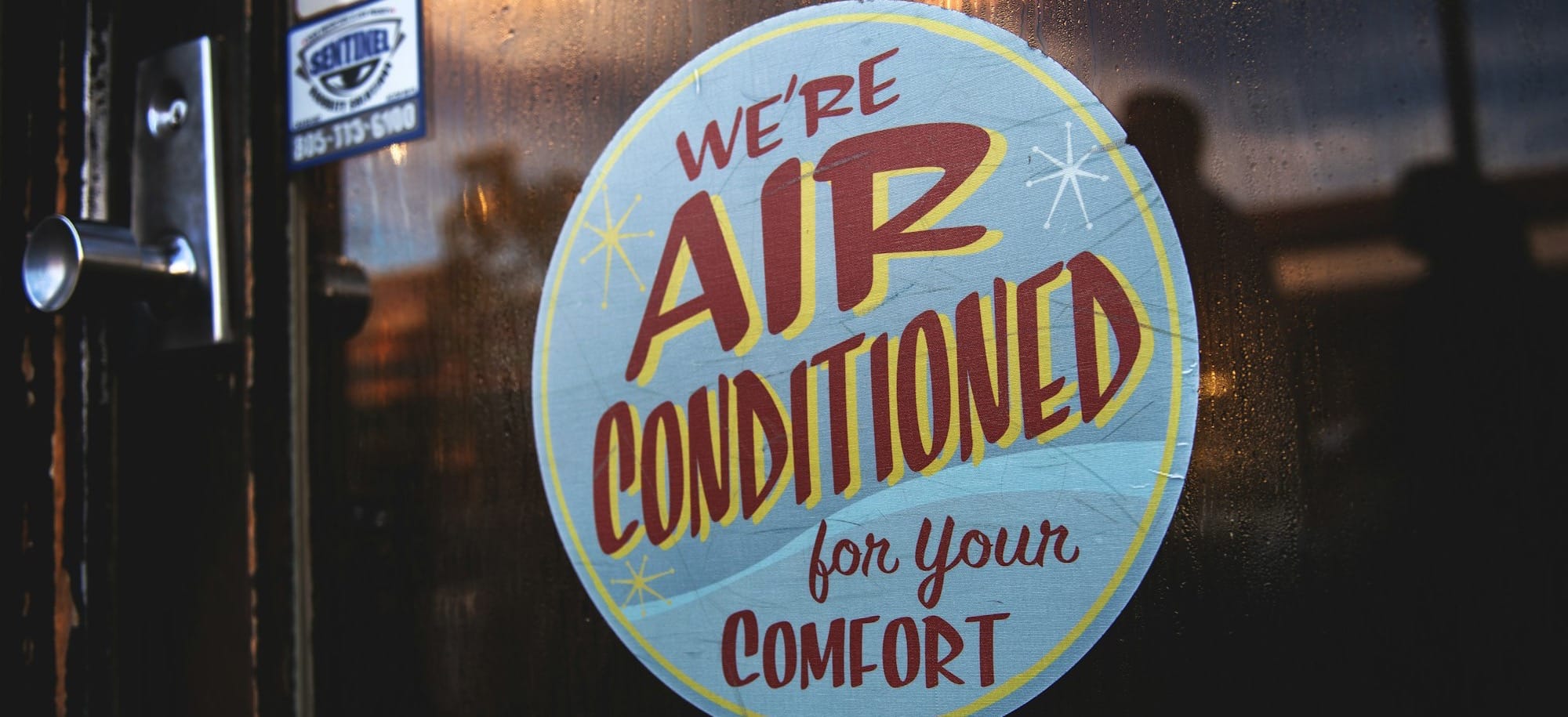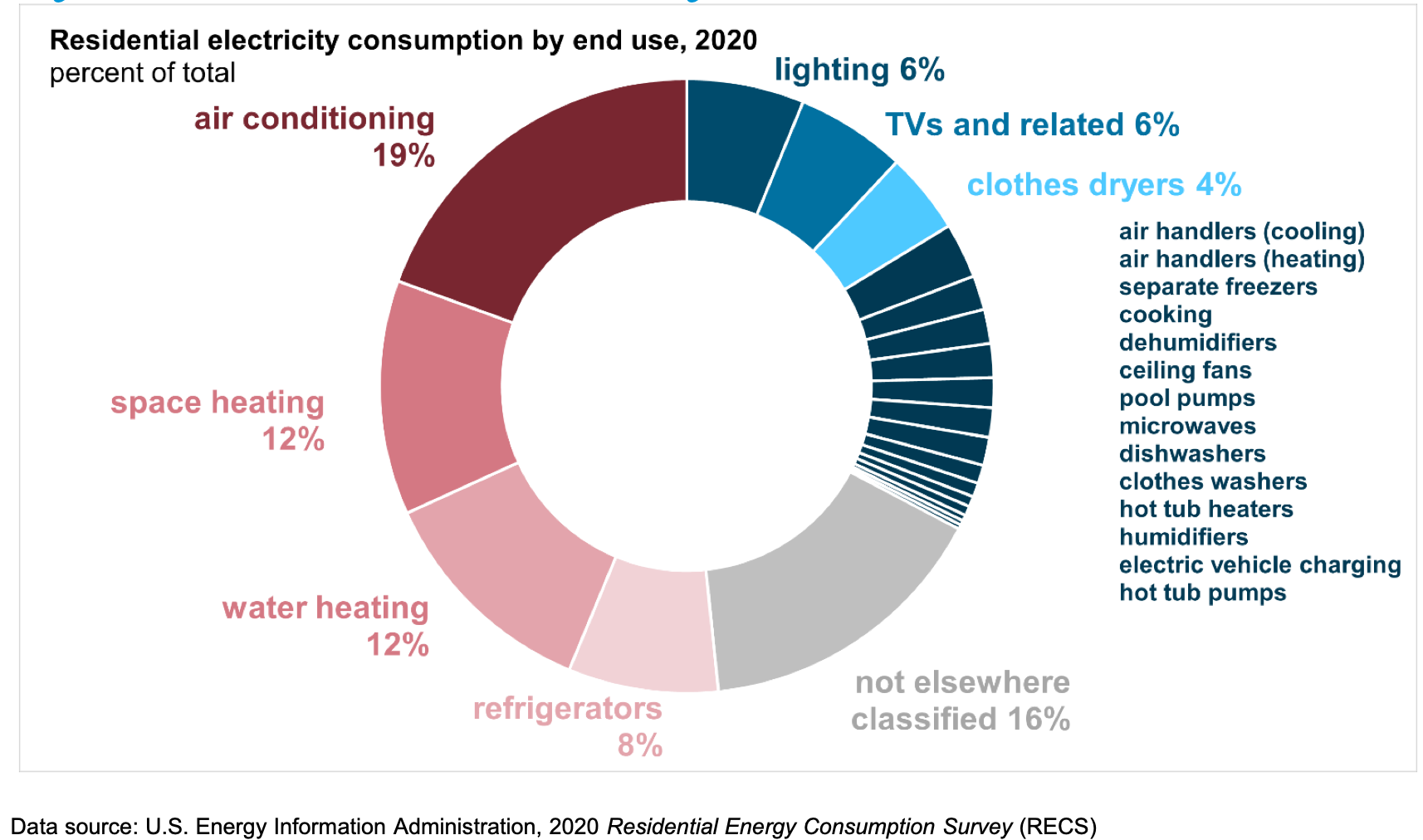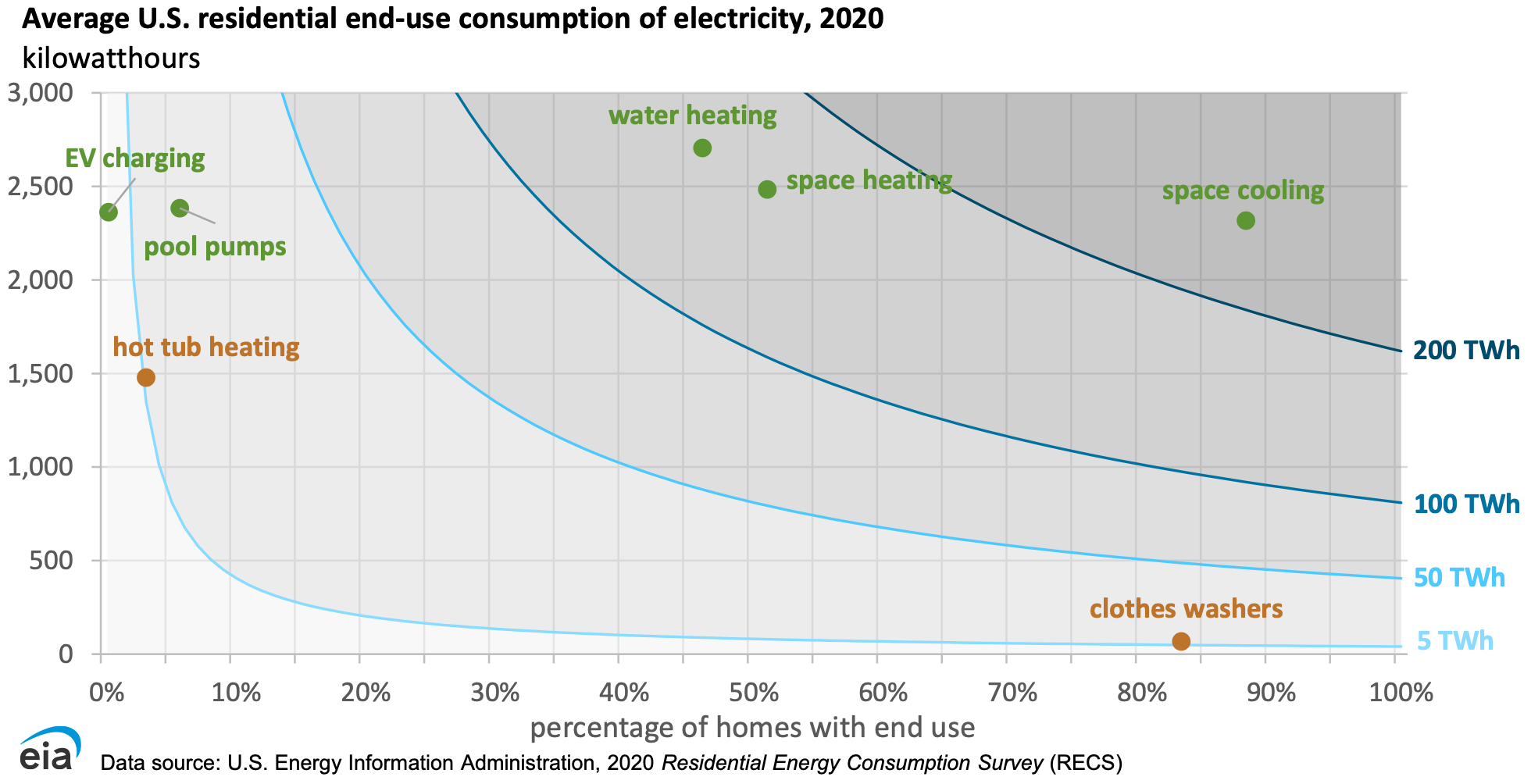What appliances use the most electricity in residential homes?
Not surprisingly, air conditioning and heating systems.

Electricity is a cornerstone of modern living in the United States, powering everything from basic lighting to complex home entertainment systems. But what does all this cost, and how does it affect your utility bill? With the average electric bill approaching $150/month, how can you save money? Here's a look at the top energy-consuming appliances in U.S. homes.

#1 - Heating and Cooling Systems
Unsurprisingly, heating, ventilation, and air conditioning (HVAC) systems top the list of home energy usage. These systems account for nearly half of a household's energy consumption. Central air conditioners, furnaces, and heat pumps are major energy draws because they operate for extended periods during hot summers or cold winters. Looking at just electricity use, space heating appears smaller as a percentage in the above chart as many houses use natural gas as the primary heat source with electricity powering just the fan in a furnace. Given the size and cost of these systems, we’ll look at this area in depth in upcoming posts.
#2 - Water Heaters
Water heaters are the second-largest home energy consumers, responsible for about 12-15% of a household's energy use. Traditional gas or electric storage water heaters continuously heat water in a tank, leading to ongoing energy use. On-demand tankless water heaters can be more efficient as they heat water only when needed. Newer heat pump water heaters, while still using storage tanks, use energy far more efficiently than traditional storage or even on-demand tankless units. We’ll explore each of these options in more detail.
#3 - Refrigerators and Freezers
Refrigerators and freezers run 24/7, making them the third-largest energy users, about 8% of home electricity use. Older models, especially those manufactured before energy efficiency standards improved in the 1990s, consume significantly more electricity. Modern ENERGY STAR-rated appliances use up to 40% less energy.
#4 - Lighting
The shift to LED bulbs has reduced lighting-related energy consumption significantly - lighting now accounts for around 5-6% of a home’s electricity use. Back in 2006, lighting was the #2 usage of household electricity, and accounted for about 18% of a home’s electricity use - according to nema.org as of 2019, “No other category of appliances or equipment came close to the reduction in electricity use that lighting contributed.” This alone saves the average household over $200/year in electricity costs.
#5 - Home Electronics and Entertainment Systems
Televisions, gaming consoles, computers, and home office equipment collectively add up to about 6% of a home’s electricity usage. Even when turned off, many devices continue to use "standby power." Unplugging devices when not in use or using smart power strips can minimize this "phantom load."
#6 - Clothes Dryers
Clothes dryers can be notorious energy hogs, responsible for about 3-4% of household energy use. While gas and electric clothes dryers operate with similar efficiencies, there are often tradeoffs in cost making gas units less expensive to operate than traditional electric clothes dryers. Newer heat pump clothes dryers are more efficient than either gas or traditional electric clothes dryers - and can be cheaper to operate, but may take longer to dry clothes.
What about pool pumps, hot tubs, and EV charging?
Because relatively few homes have these, EV charging at home, pool pumps and hot tubs don’t show up in the “average” top electricity consumers - however, if you have any of these, they will be among your top 3-4 users of energy - as shown in the chart below from the EIA. We’ll cover each of these in future articles.

Tips for Reducing Electricity Costs
Understanding which appliances use the most electricity empowers you to make decisions and tradeoffs about your use. Purchasing energy efficient appliances, heating, AC and hot water heating systems can save substantial amounts of money on electric bills and improve livability.
Small changes in behavior can save too - for example, with my utility’s time-of-use electricity billing plans, drying a load of clothes at 6pm costs twice as much as drying them at 7am; it’s possible to save up to $2 per load just by choosing the timing wisely. Of course, drying clothes on a laundry rack outside totally eliminates the cost!
